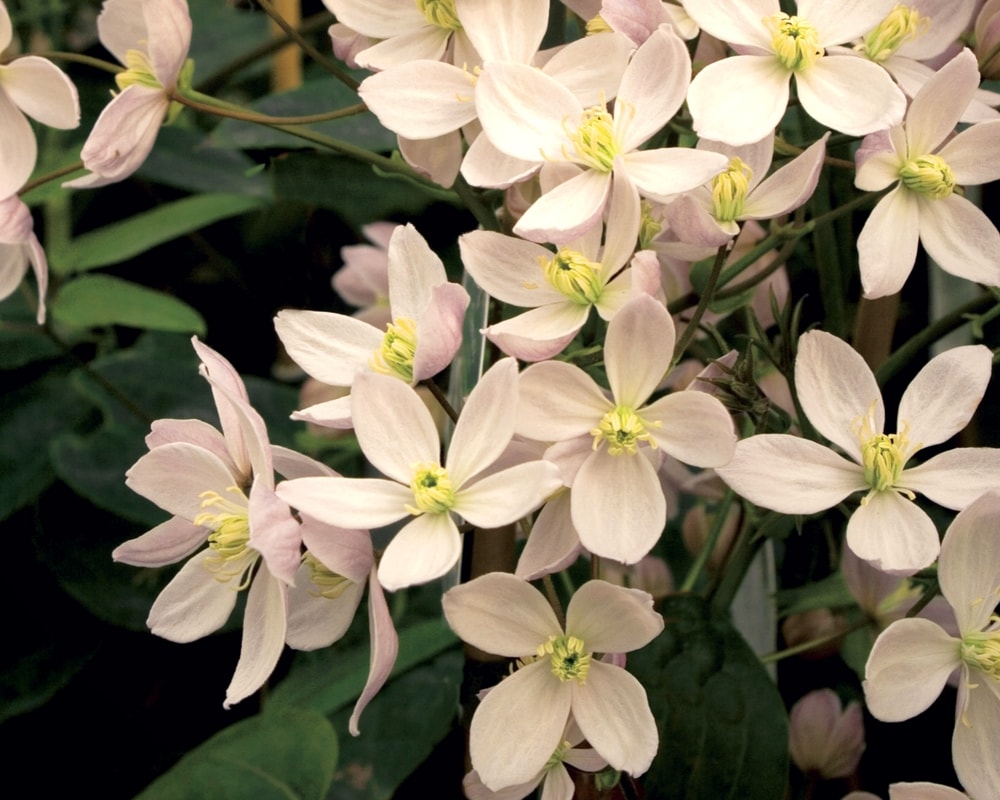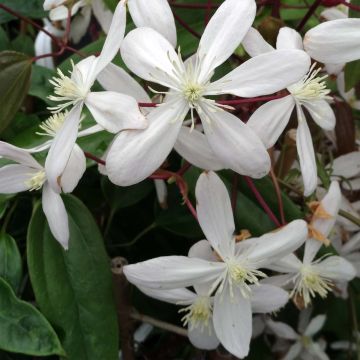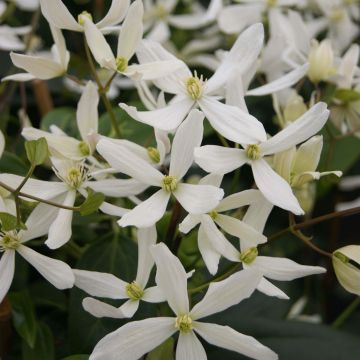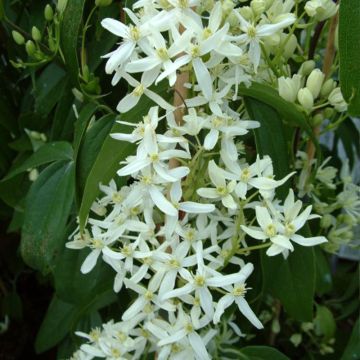
Evergreen Clematis: How to Choose, Plant and Grow Them
Our tips for growing Clematis armandii and balearica
Contents
Clematis are mostly deciduous climbing plants, but there are also some evergreen varieties! These can be grown in the ground or in pots, and typically flower in late winter or early spring. Most of them are not very hardy and require winter protection. Discover where, when and how to plant clematis armandii and cirrhosa: all our tips for successful cultivation and care.
Which evergreen clematis variety should you choose?
The Clematis armandii offer a lovely white or pinkish bloom in late winter, which stands out against their dark green, glossy foliage. They thrive against a south-facing wall and cannot tolerate cold, windy conditions. For a slightly more colourful bloom, opt for the Clematis cirrhosa, particularly the varieties ‘Advent Bells’ or ‘Freckles’, which flower in mid-winter, sometimes as early as December. They are not very hardy and will need to be planted in pots and brought indoors for winter if you live in northern France. Also discover the Clematis ‘Winter Beauty’, which will charm you with its pretty white bell-shaped flowers. However, it is quite delicate to grow!
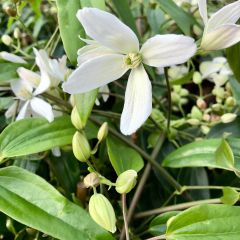
Clematis armandii - Evergreen Clematis
- Flowering time April, May
- Height at maturity 4 m
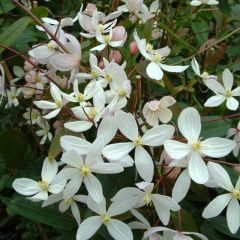
Clematis armandii Apple Blossom
- Flowering time April, May
- Height at maturity 4 m
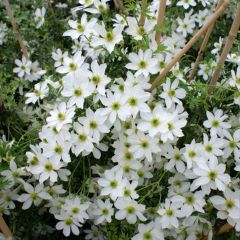
Clematis x cartmanii Early Sensation
- Flowering time April, May
- Height at maturity 3 m
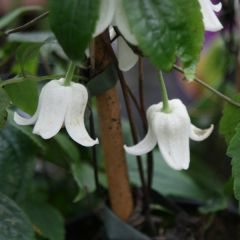
Clematis urophylla Winter Beauty
- Height at maturity 3 m
The Clematis cirrhosa
The Clematis cirrhosa originate from the Mediterranean region and are not very hardy. They can reach up to three metres in height and adapt well to container growing, making it easy to bring them indoors for winter.
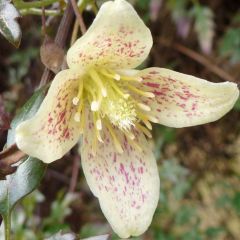
Clematis cirrhosa var. balearica
- Height at maturity 3 m
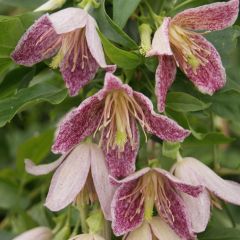
Clematis x cirrhosa Advent Bells
- Height at maturity 4 m
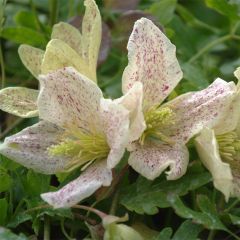
Clematis cirrhosa Winter Parasol
- Height at maturity 2,50 m
Read also
Clematis: Planting, Pruning and CareDiscover other Clematis Armandii
Where to plant evergreen clematis?
Plant your clematis preferably in full sun, but with the base in shade.
Evergreen clematis need a sheltered spot protected from wind to thrive. Avoid planting them in areas exposed to winter winds. North of the Loire, a well-protected location is almost essential to help them withstand severe cold. Plant them against a trellis at the foot of a south or south-west facing wall. Clematis armandii can tolerate being planted directly in the ground in northern France, unlike clematis cirrhosa.
We advise against planting them in mountainous or continental climate regions, as they will struggle to survive winter, even with protection… Unless, of course, you grow them in pots and bring them indoors for winter.
Clematis are delicate and demanding plants. They appreciate deep, rich, humus-rich soils. If your soil is poor, you’ll need to add compost to enrich it. The soil should also remain cool but sufficiently well-drained. They dislike excessive winter moisture. To improve water drainage, you can add gravel, horticultural sand or pumice to your soil.
Plant clematis cirrhosa in full sun and well-drained soil, as they cannot tolerate wet conditions in winter. They will thrive against a south-facing wall. Less hardy than other varieties, they will need protection – either by growing them in pots and bringing them under cover for winter, or by planting them against a south-facing wall with a thick mulch at the base… Unless you live in the Mediterranean region!
How to plant them properly?
- Soak the root ball in a basin of water to rehydrate it.
- Using a spade or shovel, dig a planting hole two to three times the size of the root ball. You can add a layer of gravel, horticultural sand or pumice to ensure good drainage. Then add compost mixed with some manure compost to the planting hole.
- Without disturbing the roots, lay the root ball in the hole, which encourages the development of latent buds.
- Fill in around the plant with compost and gently firm down, then water.
- We recommend applying a mulch around the base of the clematis to keep the soil cool.
- Continue to water regularly during the first year after planting.
- You can also plant your clematis in a pot. In this case, it will require more frequent watering and regular repotting.
How to care for them?
- Water during prolonged dry spells, especially in the first few years.
- In spring and autumn, add organic matter, such as compost or well-rotted manure.
- You can lightly prune your clematis in spring, once flowering has finished, using a clean secateurs. Remove damaged or poorly positioned branches and shorten the longest stems. These evergreen varieties can also do without pruning.
- Evergreen clematis are not very hardy. Below -5°C, protect the plant with a winter fleece, especially in the first few years. After three years, it will be strong enough to do without protection. If planted in a pot, you can bring it indoors to a conservatory for winter.
- Subscribe!
- Contents


































